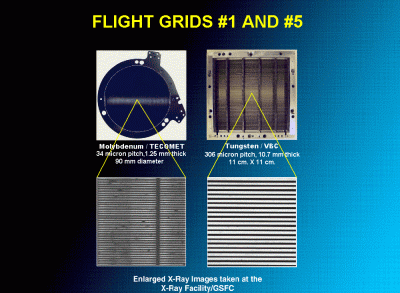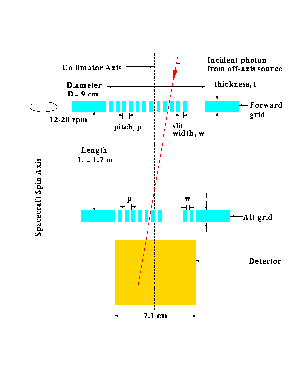|
|
|
Other RHESSI |
|
|
|
|
|
|
|
|
|
|
|
|
Grid Pairs
Grid pair parameters illustration (provided by Dr. Brian Dennis)
The grids must be made of a high Z (high atomic number), high density material that is very thick. Otherwise, they will not block high energy photons. Molybdenum and tungsten are two of the materials that are being used in making the grids. Grid pairs with slats finer than a human hair have to be aligned front to back with great precision. There can be no more misalignment than ten percent of one pitch across the entire grid field before detector sensitivity decreases. Aligning grids 1.7 meters apart with no more offset than 1/30th the width of a human hair is quite a challenge.
There is a limit to the fineness of the slit width, w, given the slat thickness, t. If light is entering the grid pair off axis, a too narrow slit or a too thick slat would have the slat pair blocking the light at all of the spacecraft rotation angles. See the expanded grid pair image (above). The red line would be blocked on the aft grid if the slits were narrower or the slats were thicker. That would mean the detector would always be in the dark. So, there is a limit to the off-axis angle of view for a given grid pair.

Two grids with enlargments of the pitch
shown below each grid
![]()
Back to HESSI Imaging Technique


